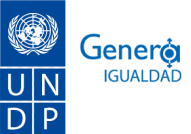According to the ‘UNESCO Science Report: towards 2030’, women are not represented well in the sciences; the report states that women only account for 28.4% of researchers (17). Though Latin America and the Caribbean has relatively high shares of women researchers with 44%, women scientists are still sparsely represented in Suriname. To mark the International Day of Women and Girls in Science on 11th of February, Manorama Sunuwar, Gender Specialist of UNDP Suriname, met Sukarni Mitro, head of the Meteorological Service Suriname (MDS) of the Ministry of Public Works Transportation and Communication (OWTC), who has been leading the Meteorological Department of Suriname since 2015.
According to the ‘UNESCO Science Report: towards 2030’, women are not represented well in the sciences; the report states that women only account for 28.4% of researchers (17). Though Latin America and the Caribbean has relatively high shares of women researchers with 44%, women scientists are still sparsely represented in Suriname. To mark the International Day of Women and Girls in Science on 11th of February, Manorama Sunuwar, Gender Specialist of UNDP Suriname, met Sukarni Mitro, head of the Meteorological Service Suriname (MDS) of the Ministry of Public Works Transportation and Communication (OWTC), who has been leading the Meteorological Department of Suriname since 2015.
Under the Global Climate Change Alliance + flagship initiative (GCCA+), the government of Suriname, through the Meteorological Department, has partnered with the United Nations Development Programme (UNDP) and the European Union (EU) to decrease the vulnerability of the country due to negative impacts of climate change.
Sukarni Mitro told her journey that led her to where she is now.
“Since my childhood, I always wanted to work in the field of science. My older brother was an electronic technician, and I remember that I was always mesmerized by how knowledgeable he was about a variety of electronical equipment and technology. When I was in primary school, one day a teacher asked our class what do we want to be when we grow up. I said that I wanted to be an electronic technician. When the teacher told me that it is a profession for men, the whole class laughed at me.”
However, she did not give up her dream of being a professional in the field of science. She studied hard to build a strong foundation to pursue her dream, fighting against gender stereotypes. She said, “I loved studying mathematics and physics. I did not hesitate to study in male-dominated classes.” She went to study meteorology and hydrology at the Technical-Natural Secondary School. After obtaining her undergraduate degree in Physics, she pursued a master’s degree in Climate Change Management. This academic career guided her to be at the Meteorology Service Suriname (MDS), where she is now today.
At first, Sukarni joined the meteorological department as a meteorological assistant; her main job was mainly data collection. This was just a beginning of her professional career; she wanted more responsibilities and challenges. While she was working as an assistant, she took a part in a number of research studies and kept herself updated with latest scientific articles and information to develop her knowledge and skills. Her persistent willpower and effort to learn led her to become the first female head of the department. According to Sukarni, Meteorological Department has a high number of female staff, but most of them are in low-level positions.
She believes that women should not be intimidated about collaborating with men to be successful in any field. She emphasized, “when I was a student, rather than being intimidated by the large number of guys in classes, I worked and studied with them. We exchanged ideas and solved problems together. Still now, to collaborate with my male colleagues at work has been a crucial factor that leads me to be in this leadership role.”
She acknowledges that the Meteorology Department needs to pay more attention to gender aspects of climate change. She realized that most of their clients are men, but women face higher risks and bear greater burden from the impact of climate change especially in developing countries, as the majority of the world’s poor are women. She said, “we need to develop creative communication strategies for providing information to vulnerable populations. For instance, people living in hinterland regions do not have access to up-to-date information about weather and climate through our website, although they are the ones who need the information the most.”
Science and gender equality are both vital for the achievement of the Sustainable Development Goals. However, women and girls continue to be excluded from participating fully in science. Today, International Day of Women and Girls in Science, aims to raise awarenss of the gender gap and to achieve full and equal participation of women and girls in science.

